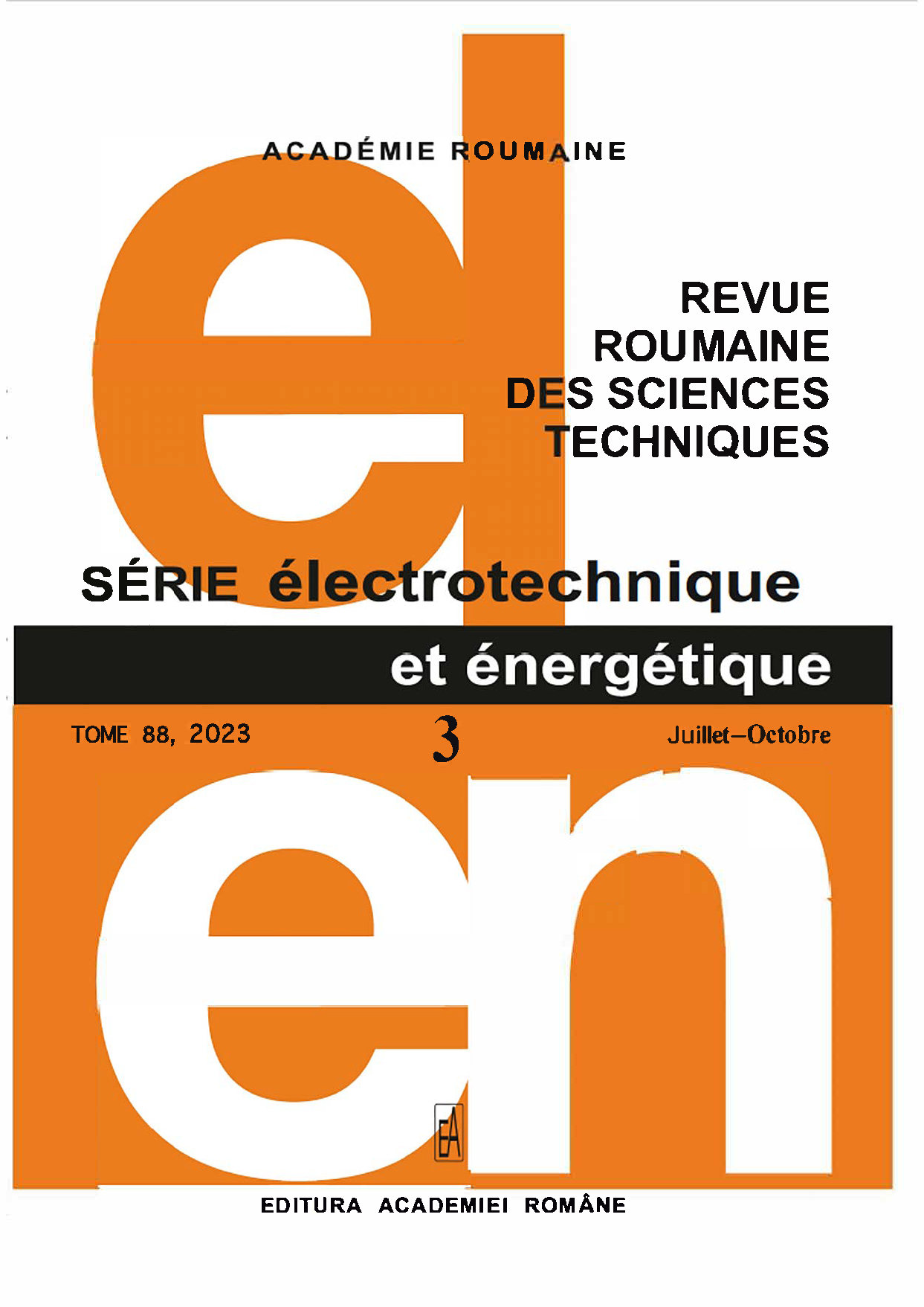DÉVELOPPEMENT D'ALGORITHME DE RÉTROPROPAGATION POUR L'ESTIMATION DU RAYONNEMENT SOLAIRE : UNE ÉTUDE DE CAS EN TURQUIE
DOI :
https://doi.org/10.59277/RRST-EE.2023.3.11Mots-clés :
Radiation solaire, Estimation, Réseau neuronal artificiel, RétropropagationRésumé
L'énergie solaire a un rôle important à jouer pour atteindre l'objectif de remplacement des combustibles fossiles et de réduction des émissions de gaz à effet de serre avec un potentiel important. Les ingénieurs, les architectes et les agriculteurs ont besoin d'informations précises sur le rayonnement solaire afin de développer des systèmes d'énergie solaire. C'est une pratique courante pour les services météorologiques du monde entier de mesurer la durée d'ensoleillement et la température de l'air. Malgré cela, les mesures mondiales du rayonnement solaire sont extrêmement rares et certaines informations font défaut. Il devient vital d'estimer le rayonnement solaire sur des sites qui n'ont pas leur propre station. Dans la littérature, une variété de modèles ont été développés pour estimer le rayonnement solaire. Le modèle de réseau de neurones artificiels (ANN) est couramment utilisé pour l'estimation du rayonnement solaire global. Dans cette étude, un algorithme de rétropropagation pour toute l'année est généré pour estimer le rayonnement solaire global à Adana en utilisant les données météorologiques obtenues auprès des services météorologiques de l'État turc. Le modèle ANN a été développé en utilisant les données des années 2014, 2015 et 2016 avec le programme MATLAB. Les données de 2017 sont utilisées pour tester le modèle. Une comparaison entre le modèle développé et les données réelles est effectuée en fonction de la valeur R2. À la suite de l'étude, le R2 obtenu en entraînant les données a été calculé à 0,9019. La valeur R2 dérivée des données de test a été calculée comme 0,7277. À la lumière de ces résultats, on peut dire que l'étude d'estimation a été satisfaisante.
Références
(1) N. Rathore, N.L. Panwar, F. Yettou, A. Gama, Estimation and mapping of linke turbidity factor from solar radiation measurement for Indian climatic conditions, Rev. Roum. Sci. Techn.-Electrotechn et. Energ., 66, 4, pp. 285-292 (2021).
(2) M. Sahan, O. Tokat, O. Yuksel, Daily total solar radiation measurements in Osmaniye, Süleyman Demirel University Faculty of Science and Letters Journal of Science,10, 2, pp. 97-105 (2015).
(3) E.E. Ituen, N.U. Esen, S. C. Nwokolo, E.G. Udo, Prediction of global solar radiation using relative humidity, maximum temperature and sunshine hours in Uyo, in the Niger Delta Region, Nigeria, Advances in Applied Science Research, 3, 4, pp. 1923-1937 (2012).
(4) G.N. Tiwari, Solar Energy: Fundamentals, Design, Modelling and Applications, Alpha Science Int'l Ltd (2002).
(5) R. Srivastava, A.N. Tiwari, V.K. Giri, Forecasting of solar radiation in India using various ANN models, 2018 5th IEEE Uttar Pradesh Section International Conference on Electrical, Electronics and Computer Engineering (UPCON), pp. 1-6 (2018).
(6) B. Sibaneasan, B.C. Yu, K.P. Goh, Solar forecasting using ANN with fuzzy logic pre-processing, Energy Procedia, 143, pp. 727-732 (2017).
(7) M.A.F.B. Lima, P.C. Carvalho, A.P.D.S. Braga, L.M.F. Ramirez, L.R. Leite, MLP back propagation artificial neural network for solar resource forecasting in equatorial areas, Renewable Energy and Power Quality Journal (RE&PQJ), 1, pp. 175-180 (2018).
(8) M.J. Ahuja, M. Sharma, V. Birchha, Solar Energy Prediction using LM-Back-propagation in ANN, IOSR Journal of Computer Engineering (IOSR-JCE), 21, 1, pp. 1-7 (2019).
(9) E.Z. Mohamed, Using the artificial neural networks for prediction and validating solar radiation, Journal of the Egyptian Mathematical Society, 27, 1, pp. 1-13 (2019).
(10) J. Li, J. Chen, J. Shi, F. Huang, Brief introduction of back propagation (BP) neural network algorithm and its improvement, Advances in Computer Science and Information Engineering, Springer, pp. 553-558 (2012).
(11) O.I. Abiodun, A. Jantan, A.E. Omolara, K.V. Dada, N.A. Mohamed, H. Arshad, State-of-the-art in artificial neural network applications: A survey, Heliyon, 4, 11, pp. 1-41 (2018).
(12) S. Walczak, Artificial Neural Networks, Encyclopedia of Information Science and Technology, Fourth Edition, IGI Global, pp. 120-131 (2018).
(13) M. Kubat, Artificial Neural Networks, An Introduction to Machine Learning, Springer, pp. 117-143 (2021).
(14) R. Tuntas, B. Dikici, An investigation on the aging responses and corrosion behaviour of A356/SiC composites by neural network: the effect of cold working ratio, Journal of Composite Materials, 50, 17, pp. 2323-2335 (2016).
(15) S. Setti, A. Wanto, Analysis of backpropagation algorithm in predicting the most number of internet users in the world, Journal Online Informatika, 3, 2, pp. 110-115 (2019).
(16) A. Wanto, M. Zarlis, D. Hartama, Analysis of artificial neural network backpropagation using conjugate gradient fletcher reeves in the predicting process, Journal of Physics: Conference Series, 930, 1, pp. 12-18 (2017).
(17) A. Hasni, A. Sehli, B. Draoui, A. Bassou, B. Amieur, Estimating global solar radiation using artificial neural network and climate data in the south-western region of Algeria, Energy Procedia, 18, pp. 531-537 (2012).
Téléchargements
Publiée
Numéro
Rubrique
Licence
(c) Copyright REVUE ROUMAINE DES SCIENCES TECHNIQUES — SÉRIE ÉLECTROTECHNIQUE ET ÉNERGÉTIQUE 2023

Ce travail est disponible sous licence Creative Commons Attribution - Pas d'Utilisation Commerciale - Pas de Modification 4.0 International.


